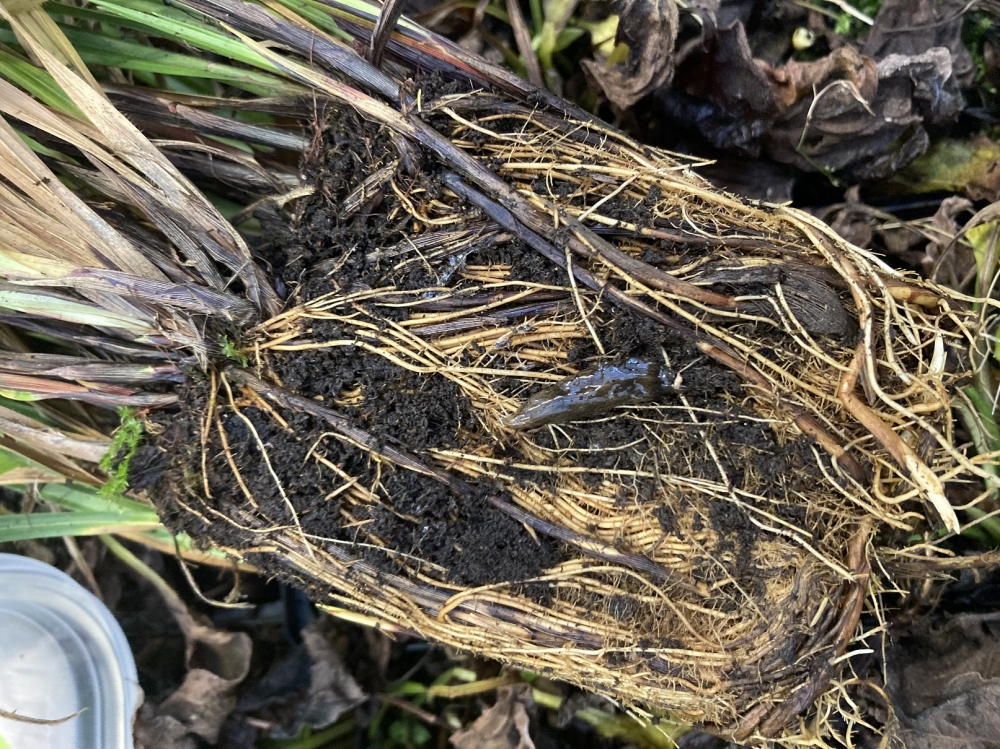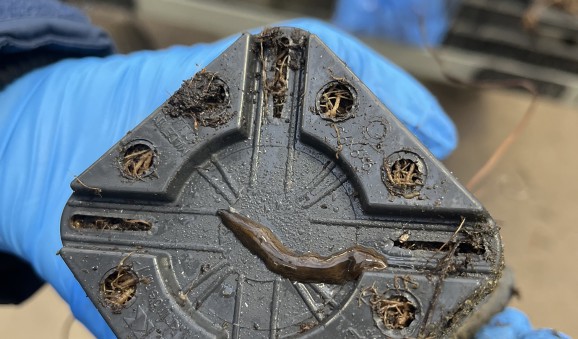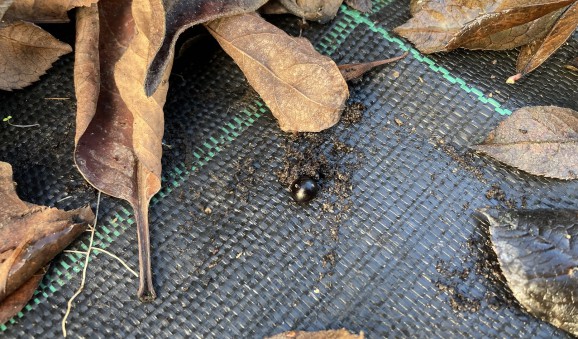- HOME >
- NEWS >
- Cultivation 08-05-2025
Discovery of invasive flatworm makes Swedish nurseries act

In November 2024, the first case of Obama nungara was discovered in a newly established plantation in Malmö, Sweden. Since then, the industry has worked hard to find ways to discover and counteract the feared invasive species.
Obama nungara is a new invasive species in Sweden, that was discovered in the Southern part of the country, in November 2024. Since then, it has been discovered on several types of plants imported from various suppliers on the continent.
Obama nungara is a flatworm that originates from South America; Brazil, Argentina and Uruguay. It has been inadvertently introduced into Europe and the United States via the plant trade. The flatworm is a predator that lives on worms, snails and other species of flatworms. It is usually found in nature under pieces of wood, stones and leaves. Until now, it has been discovered in plantings, under pots and trays in Sweden.
Fast acting
The Swedish government acted fast and in December they decided to introduce emergency measures in accordance with Article 10 in the EU Regulation No.1143/2014, on Invasive Alien Species. Since the 7th of January, 2025, Obama nungara is now covered by so-called emergency measures in Sweden. That means it is now forbidden to intentionally keep the species, to let it grow, to transfer or exchange it, and to release it into the environment.
Obama nungara have been found in many European countries and is now also a threat for Sweden. Many now fear the consequences if the species will spread, partly because of its effect on soil worms and therefore the soil health.
No scientific research
At the EU level, a risk analysis has been carried out on whether the worm could become invasive, and in the first quarter of 2025 a decision is expected to be made on whether it should be added to the EU's list of invasive species.
– Obama nungara is not considered a plant pest and probably that is why it has not been taken very seriously in Europe yet. There is still no specific scientific research on the harmful effects of it, which may contribute to the fact that no systematic measures have been taken to defeat it, says Nils Andersen, CEO and product manager of Splendor Plant, the largest wholesale nursery in the Nordics.
Advise lists and reports
In 2025 we will know a lot more about the flatworm, but right now it's about acting quickly and effectively to minimize the risk of spread. The Swedish Country Board (Länsstyrelsen) have made advice lists for the industry to reduce the spread of Obama nungara, for instance, how to control imported plant material and how to act upon discovery of the species. In Sweden, the municipalities have the responsibility of supervising nurseries. All findings must be reported to the Swedish Country Board or the Swedish Environmental Protection Agency (Naturvårdsverket).
Ambiguous nurseries
After the discovery in November, nurseries acted fast with several creative solutions. It is an advantage to ensure that the methods used to eliminate the Worms do nor harm the plants. There are almost 2,000 different plants in cultivation in Swedish nurseries and how they all respond to heat and cold treatment; nobody knows at the moment.
Splendor Plant, have been active with their efforts and have decided to be the safest nursery for their customers. Their goal is to deliver plants free from Obama nungara without changing their broad assortment of plants. To do that, they have developed a control program for all of their imported plant material, and continue to work out methods and techniques to fight the worm.
– We control thoroughly, but it is hard to be 100 percent sure that the plant material is free from the species. The grown worms are far easier to find than the tiny eggs, or the smaller worms that are like a spruce needle in size, says Nils Andersen.
Methods for discovery and killing
For instance, the nursery has tried to train search dogs to mark if discovering the worm.
– It is an interesting method but it is both time consuming and expensive to train dogs. For example, the dogs need to know the different between dead or living worms, and we cannot use them to search for as long as necessary. Therefore, dogs in combination with visual inspections are our main search method at the moment, says Nils Andersen.
To kill the worm, different techniques have been tried out, like freezing plant material without harming the plant, and the company are now building a facility to be able to do warm water treatments of the plant clump and pots, which is said to be an effective way of killing the worms.
Spread knowledge
Splendor Plant also hold digital seminars to spread their knowledge and information to the industry. In February, 700 people had participated in the seminars, both industry customers and suppliers. The company also have extended their communication with suppliers to get plant material free from Obama nungara.
– When we first heard about the worm, we contacted fifty suppliers in Europe to ask if they knew about it, what they knew and if they had a control program to fight it. Only two of the suppliers, nurseries in France, confirmed that they had some knowledge, says Nils Andersen.
It is a challenging situation in the nursery sector at the moment, but Nils Andersen is optimistic.
– I think we will be able to defeat Obama nungara, but we will need more knowledge, ingenuity and cooperation both domestic and foreign, he says, and finishes:
– All this work will probably lead to us being far ahead in the future, if we discover other invasive species to defeat.
Another act from Splendor Plant has been to create an identification key in both Swedish and English, available on their website:
https://www.splendorplant.se/wp-content/uploads/2025/02/Key-Obama-Nungara-25-02-05.pdf
How to search for Obama nungara
• Look under the pot, on the ground or the Mypex fabric.
• Look at the bottom of the pot.
• Lift the plant out of the pot and look inside the pot: the sides and bottom. Next, look at the plant's root ball: the sides and underside of the plant.
• Go through the tray and black plastic boxes, look in every nook and cranny.
• The worms usually occur one by one, it is not likely to find several in the same pot, unless the pot is very large/contains a lot of earthworms.
• If you see slime trails that glisten, it could be a clue.
• Egg capsules often occur singly in the same places as the worm: on the ground, in and under the pot and in and under the tray and boxes.


